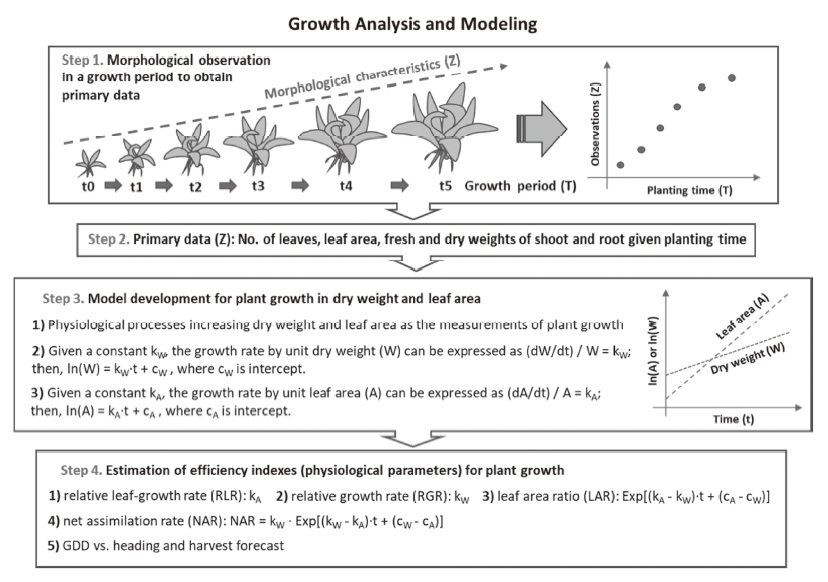All issues
Author:Chu-Chung Chen, Dar-Yuan Lee, and Kai-Wei Juang*
Abstract:
Crisphead lettuce (Lactuca sativa L.), which is often grown in cool-season region in Taiwan is the flagship vegetable for export. Because high temperature will cause bolting without head formation(i.e., heading), head lettuce is often cultivated from early autumn until the following spring. The relationship between lettuce growth variations and seasonal climate conditions was investigated by modeling parameters in plant physiology to positively develop a smart management system for lettuce production in the field. Only leafy head (i.e., curly inner leaves) of crisphead lettuce has a market value; outer leaves are mainly used for protection during harvest, storage and transportation. However, outer leaves play an important role in plant physiology by providing photosynthate (i.e., source) to support leafy head, which is the primary utilizer of photosynthate (i.e., sink) for growing inner leaves. Growth of outer leaves could be used as an index for the yield of leafy head during harvest and planting management. This study was conducted in two experimental sites no. 427 and 382 located at Erlun Township, Yunlin County during the period 2017–2018. Growth of lettuce plants was measured in three cropping seasons (I/2017, II/2017 and I/2018). In order to investigate the relationship between growth variations and climate conditions, the Malthusian growth model was used to estimate physiological parameters: relative growth rate (RGR) and relative leaf-growth rate (RLR). The results revealed that both RGR and RLR were related to the growth variations of lettuce in three cropping seasons, which would be due to the seasonal climate changes. Higher monthly average temperature and longer monthly daylight hours enhanced the biomass accumulation and leaf area expanding. Within cropping season, the gradual increases of average temperature and daylight hours were also beneficial for plant growth. In addition, the growth models for estimation of RGR and RLR were used to simulate net assimilation rates (NARs) in shoot, given that all leaves or outer leaves were the primary source of photosynthate. Based on the simulated curves of NAR, outer leaves provided most of photosynthates, which were transferred into shoots to promote area expanding and dry mass accumulation of curly inner leaves in leafy head. The intersection of both simulated curves of NAR derived from the outer leaves and all leaves indicated the date of hearting. Eventually, an average of growing degree days (GDD = 735) was suggested to be as an index of harvest date.
Key words:Exponential function, Relative growth rate (RGR), Leaf area ratio (LAR), Net assimilation rate (NAR), Heading
Download:![]() PDF Links
PDF Links
- 1. Development of Tractor-Mounted Seedling Transplanter for Sweet Potato
- 2. Synergistic Effect of Additional Gas on the Toxicity of Phosphine to Sitophilus oryzae and Sitophilus zeamais (Coleoptera: Dryophthoridae)
- 3. Effects of Temperature and Solar Radiation on Growth Traits and Plant Elements in Purple Leafy Sweet Potato

 Submit your manuscript
Submit your manuscript
 Guide for authors
Guide for authors